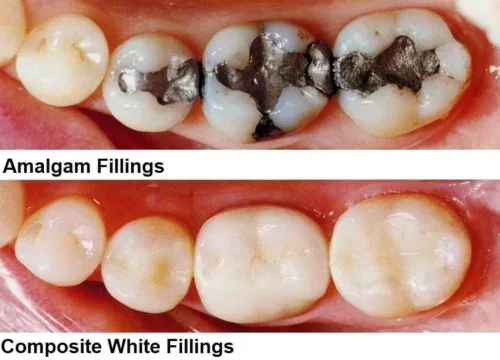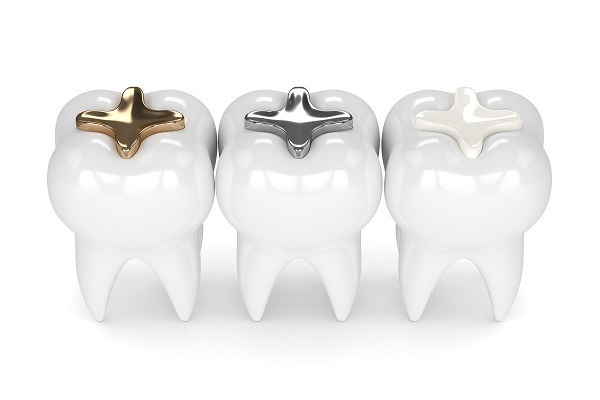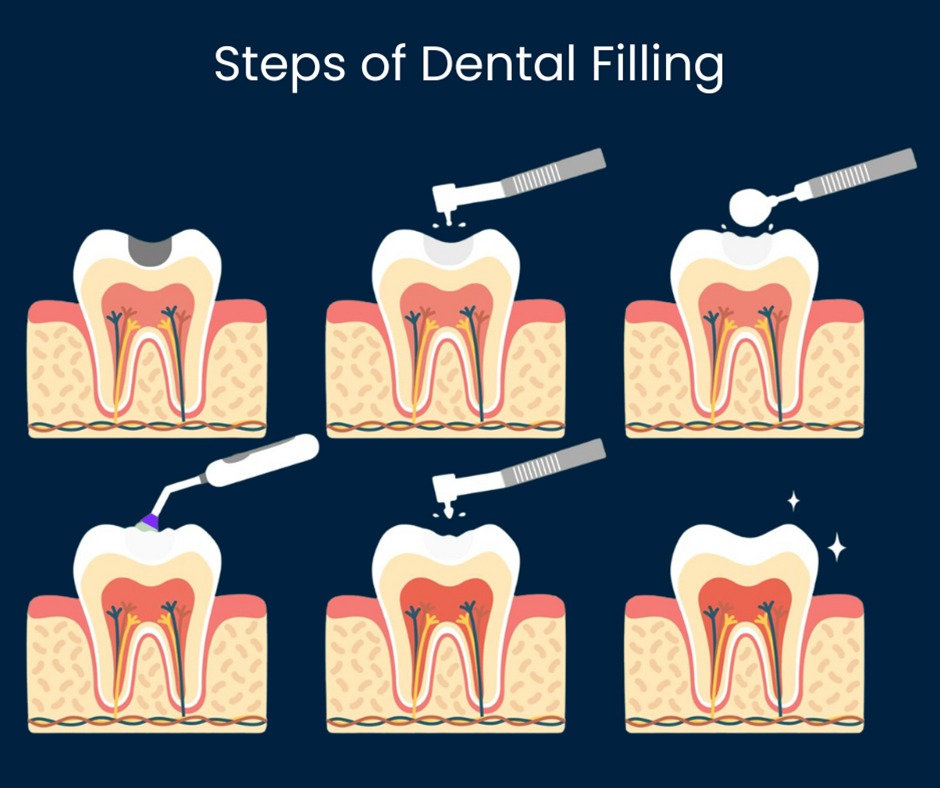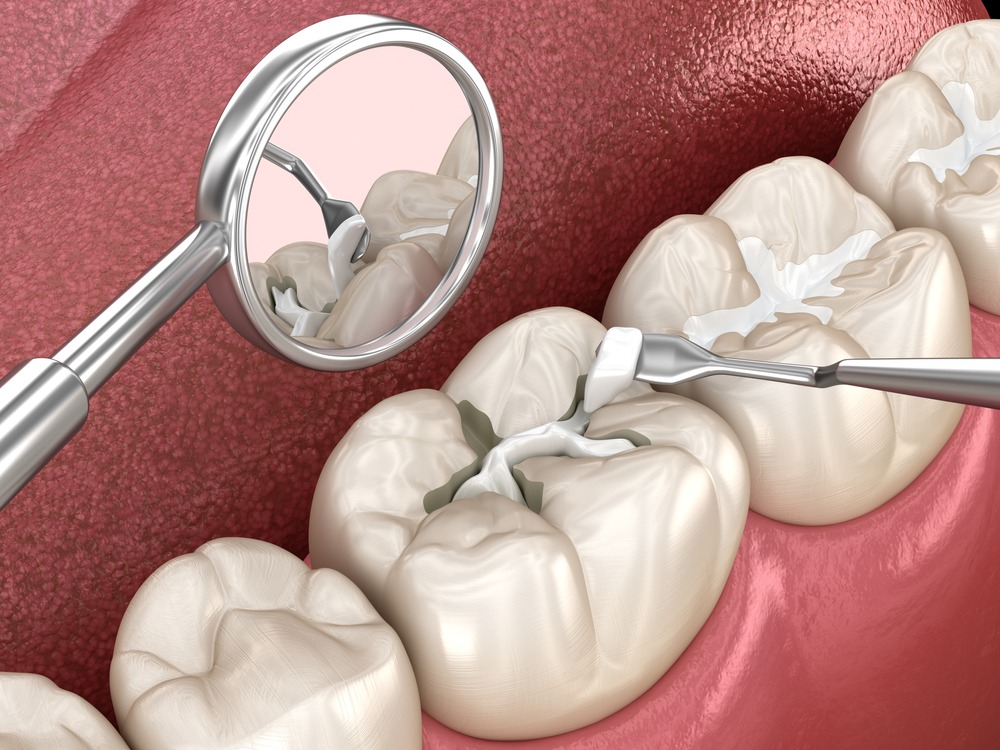Dental filling is a common dental procedure used to repair cavities and restore the structure and function of a decayed tooth. During the process, the dentist removes the decayed portion of the tooth and fills the space with a durable material such as amalgam, composite resin, or ceramic. This helps to prevent further decay and strengthen the tooth, restoring its integrity and allowing for normal chewing and biting functions.
Two materials frequently used for dental fillings are:

- Composite Resin:
- Composite resin fillings are a popular choice due to their ability to match the natural color of the tooth, providing a more aesthetically pleasing result.
- They are made of a mixture of plastic and glass materials, which bond directly to the tooth, providing good durability and strength.
- Composite fillings are versatile and can be used for small to moderate cavities in both front and back teeth.
- Amalgam:
- Amalgam fillings, also known as silver fillings, have been used for decades and are known for their durability and longevity.
- They are composed of a mixture of metals including silver, mercury, tin, and copper, which creates a strong and hard-wearing filling material.
- Although they are less aesthetically pleasing than composite fillings due to their silver color, they are often preferred for filling large cavities in molars where greater strength is needed.
When should you get a dental filling?

- Cavities (Dental Caries):
- Dental fillings are primarily used to treat cavities caused by dental caries, which are areas of decay on the tooth surface.
- When left untreated, cavities can progress and deepen, leading to pain, infection, and even tooth loss.
- Fillings help to stop the progression of decay by removing the damaged portion of the tooth and sealing the area with a filling material.
- Tooth Fractures or Damage:
- Dental fillings may be necessary to repair teeth that have been chipped, cracked, or fractured due to trauma or injury.
- Fillings restore the structural integrity of the tooth, preventing further damage and reducing the risk of infection.
- Depending on the extent of the damage, fillings can be used to rebuild the tooth and restore its shape and function.
- Worn Tooth Surfaces:
- Teeth may develop worn surfaces over time due to factors such as teeth grinding (bruxism) or acidic erosion.
- Dental fillings can be used to restore worn tooth surfaces, protecting the underlying tooth structure and preventing sensitivity and further damage.
- Cosmetic Purposes:
- In some cases, dental fillings may be used for cosmetic purposes to improve the appearance of teeth with minor imperfections or gaps.
- Tooth-coloured composite fillings can be matched to the natural shade of the tooth, providing a seamless and aesthetically pleasing result.
- Replacing Old Fillings:
- Over time, dental fillings may wear out, become loose, or develop cracks, requiring replacement.
- Regular dental check-ups allow dentists to monitor the condition of existing fillings and recommend replacement if necessary to maintain oral health and prevent complications.
Additional factors that might necessitate a tooth-filling procedure comprise:
- Preventing Tooth Sensitivity: Fillings can be used to seal exposed dentin or nerve endings in cases of tooth sensitivity, providing relief from discomfort caused by hot, cold, or sweet stimuli.
- Sealing Root Surfaces: Sometimes, the roots of teeth become exposed due to gum recession or periodontal disease. Fillings can be used to seal these exposed root surfaces, protecting them from decay and reducing sensitivity.
- Preventing Tooth Decay in Children: Children may require dental fillings to treat cavities in primary (baby) teeth. Filling these cavities helps prevent pain, infection, and premature loss of primary teeth, which can affect the eruption and alignment of permanent teeth.
- Restoring Teeth After Root Canal Therapy: Following root canal treatment to remove infected or damaged pulp from a tooth, a filling or crown is often placed to seal the access hole and restore the tooth’s function and appearance.
- Supporting Dental Restorations: Fillings may be used as a foundation to support other dental restorations, such as dental crowns or bridges. They provide stability and strength to the restoration, ensuring proper function and longevity.
- Repairing Abrasions or Attrition: Excessive tooth wear due to habits like tooth brushing too vigorously or clenching/grinding can lead to abrasions or attrition. Fillings can be used to repair these worn areas and protect the tooth from further damage.
- Closing Small Gaps Between Teeth: Dental fillings can be used to close small gaps or spaces between teeth, improving the overall appearance of the smile and facilitating proper chewing and speech.
How is a Tooth Filling Procedure Done?

- Anaesthesia: The dentist begins by numbing the tooth and surrounding area with a local anaesthetic to ensure the patient’s comfort throughout the procedure.
- Removal of Decay: Using a dental drill or laser, the dentist removes the decayed portion of the tooth, leaving behind a clean, cavity-free area.
- Tooth Preparation: The tooth is prepared by shaping the cavity to create space for the filling material. The dentist may etch or apply an adhesive to the tooth to help the filling material bond securely.
- Filling Placement: The chosen filling material (such as composite resin, amalgam, or ceramic) is placed into the prepared cavity in layers. Each layer is hardened or cured using a special light or chemical process.
- Shaping and Polishing: Once the filling material is fully cured, the dentist shapes and contours it to match the natural shape of the tooth. The filling is then polished to ensure a smooth surface and comfortable bite.
- Final Assessment: The dentist checks the filling’s fit, bite, and appearance to ensure it meets the patient’s needs and expectations.
- Post-Procedure Care: Patients are advised to follow proper oral hygiene practices, including regular brushing, flossing, and dental check-ups, to maintain the health and longevity of the filling.
By following these steps, dentists can effectively restore the integrity of a tooth affected by decay or damage, helping patients maintain their oral health and function.
Conclusion :
In conclusion, tooth-filling procedures are vital for restoring teeth affected by decay, damage, or wear. By removing decayed or damaged tooth structures and replacing it with durable filling materials, dentists can preserve the tooth’s function and integrity. Whether for cosmetic enhancement or preventive care, dental fillings play a crucial role in maintaining oral health and preventing further dental complications.

